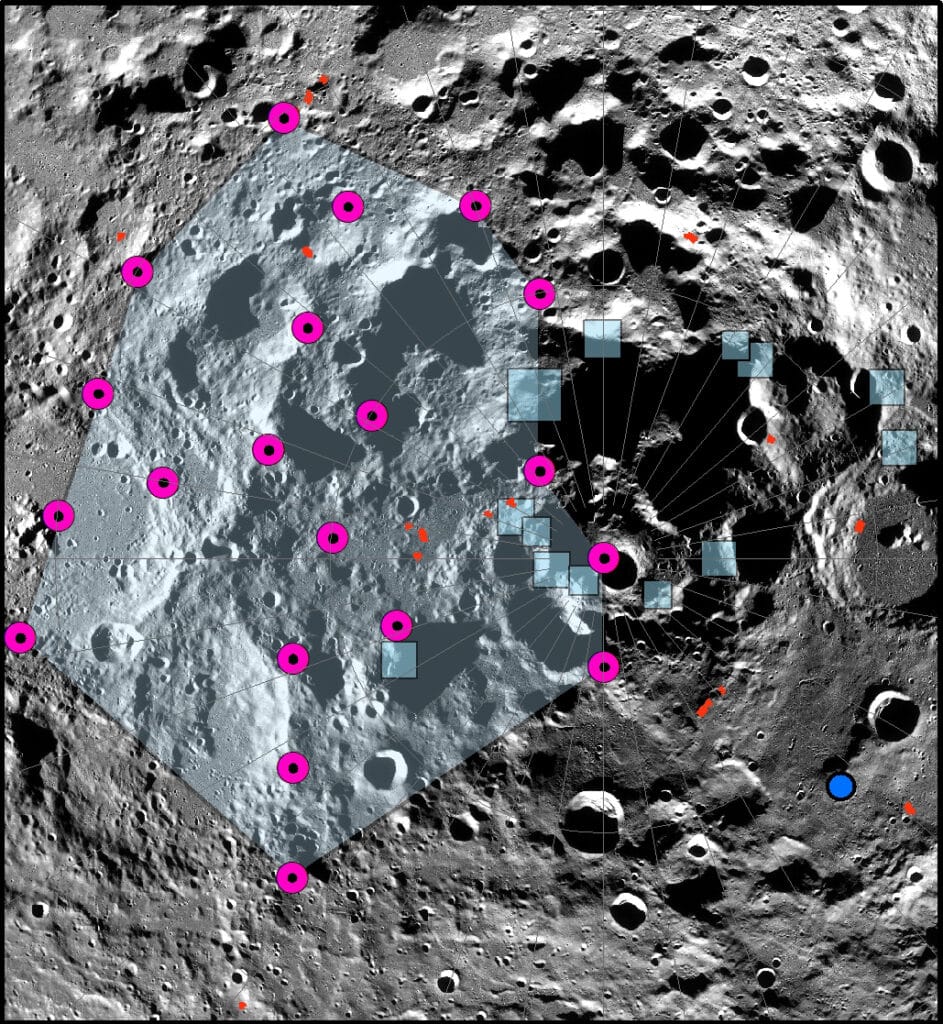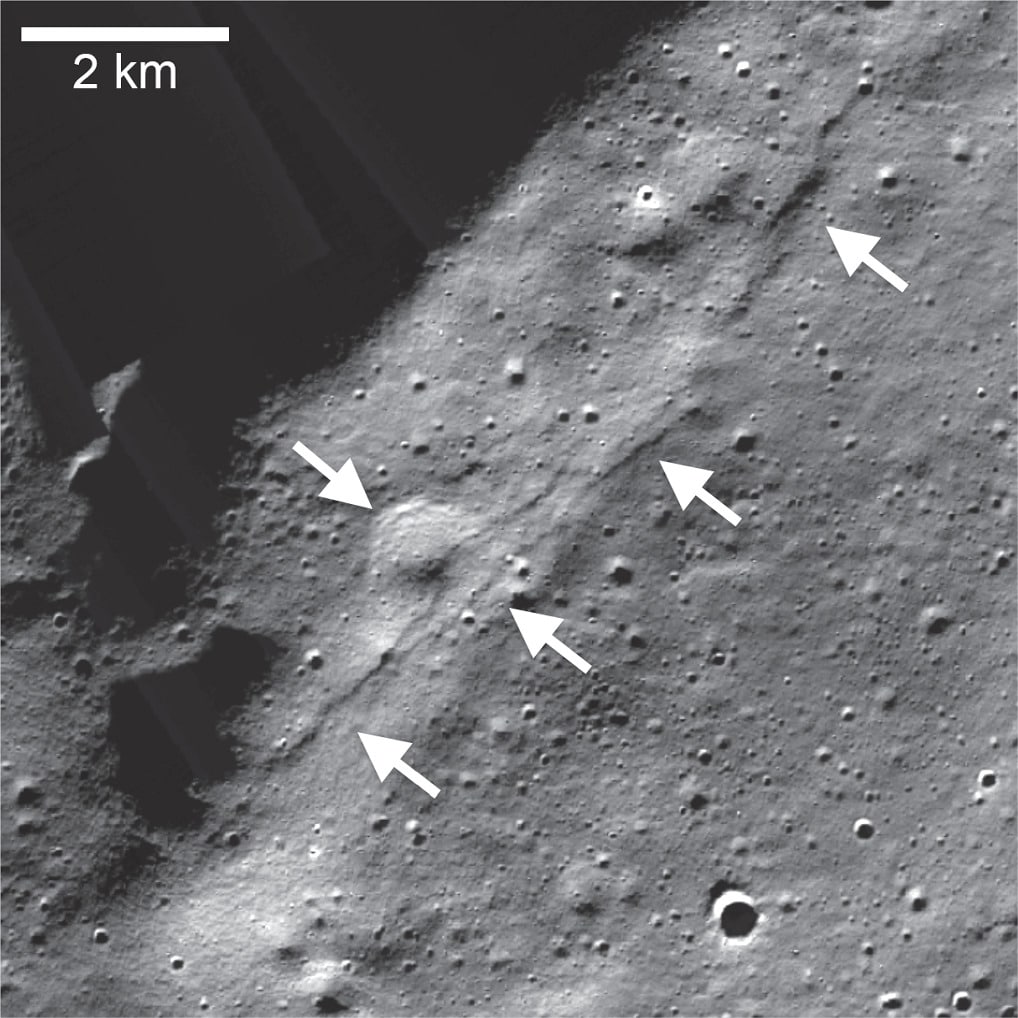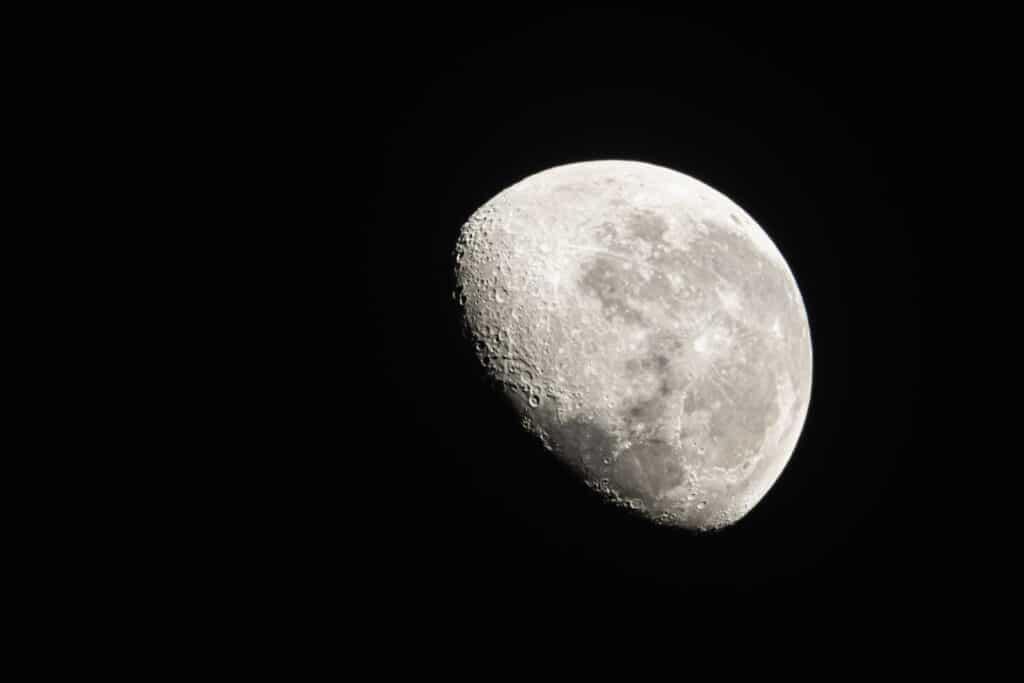Earth’s moon has undergone a significant contraction, shrinking by over 150 feet in circumference over time. This phenomenon, akin to the wrinkling of a grape as it dries into a raisin, is a result of the moon’s cooling core over several hundred million years. However, unlike a grape’s flexible skin, the moon’s surface is brittle, creating a unique set of challenges for future lunar explorations.
A recent study published in The Planetary Science Journal brings to light the implications of this shrinkage, particularly in the moon’s south polar region. This area is of special interest as it is a proposed landing site for NASA’s upcoming Artemis III mission.
This latest research, by linking a series of faults in the south polar region to a major moonquake detected over 50 years ago by Apollo seismometers, details a critical aspect of the moon’s geology. The moon, as it contracts, forms thrust faults, leading to seismic activity or moonquakes. These moonquakes are similar to earthquakes but can last much longer, with some recorded to persist for an entire afternoon.
Thomas R. Watters, the study’s lead author, explains how moonquakes alter the landscape of the moon. “Our modeling suggests that shallow moonquakes capable of producing strong ground shaking in the south polar region are possible from slip events on existing faults or the formation of new thrust faults,” he says in a statement. These insights are crucial for planning the location and stability of permanent outposts on the moon.

Unraveling the Moon’s Seismic Mysteries
The moon, once thought to be geologically dormant, is proving to be quite the opposite. Researchers have found that it experiences global compressional stresses causing tectonic deformations. These stresses manifest as lobate thrust fault scarps — cliff-like landforms created by the movement of the lunar crust. These scarps are surprisingly young, indicating that the moon is still tectonically active.
Lobate scarps, first spotted in limited high-resolution photographs from early lunar missions, are now known to be widespread across the moon’s surface. They can be tens of meters high and stretch for kilometers. What’s intriguing is that these scarps are formed by the thrust faults, where one section of the crust is pushed up over another. This finding is a game-changer in understanding the moon’s geological history.
The south polar region of the moon, a prime candidate for future lunar missions like Artemis III, has been a focus of recent studies. Researchers discovered numerous lobate scarps here, indicating that this region is also tectonically active. These findings are crucial for planning future lunar missions, as understanding the landscape is key to ensuring safe landings and explorations.

Implications for Human Settlements on the Moon
The study raises concerns over the stability of human settlements on the lunar surface. Nicholas Schmerr, a co-author of the paper and an associate professor of geology at the University of Maryland, provides a vivid description of the ground on the moon.
“You can think of the moon’s surface as being dry, grounded gravel and dust. Over billions of years, the surface has been hit by asteroids and comets, with the resulting angular fragments constantly getting ejected from the impacts,” he describes. This makes the lunar surface susceptible to shaking and landslides during moonquakes.
The driving forces behind these tectonic changes are thought to be a combination of the moon’s interior cooling and tidal stresses caused by its interaction with Earth. This complex interplay results in the moon’s surface being squeezed and stretched, leading to the formation of the thrust fault scarps.
The Artemis Missions and Beyond
As NASA’s Artemis missions, set to launch their first crewed flight in late 2024, aim to establish a long-term presence on the moon, these findings are pivotal. The mission’s objectives include establishing moon-based observatories, outposts, and settlements, which will require careful consideration of lunar seismic activity.
Schmerr stresses the importance of this research for future lunar endeavors. “As we get closer to the crewed Artemis mission’s launch date, it’s important to keep our astronauts, our equipment, and infrastructure as safe as possible,” he states. “This work is helping us prepare for what awaits us on the moon—whether that’s engineering structures that can better withstand lunar seismic activity or protecting people from really dangerous zones.”
The study not only sheds light on the dynamic nature of our moon but also serves as a vital guide for humankind’s ambitious journey to establish a sustainable presence beyond Earth. The moon’s shrinking may pose new challenges, but it also opens the door to deeper understanding and innovative solutions for space exploration.












